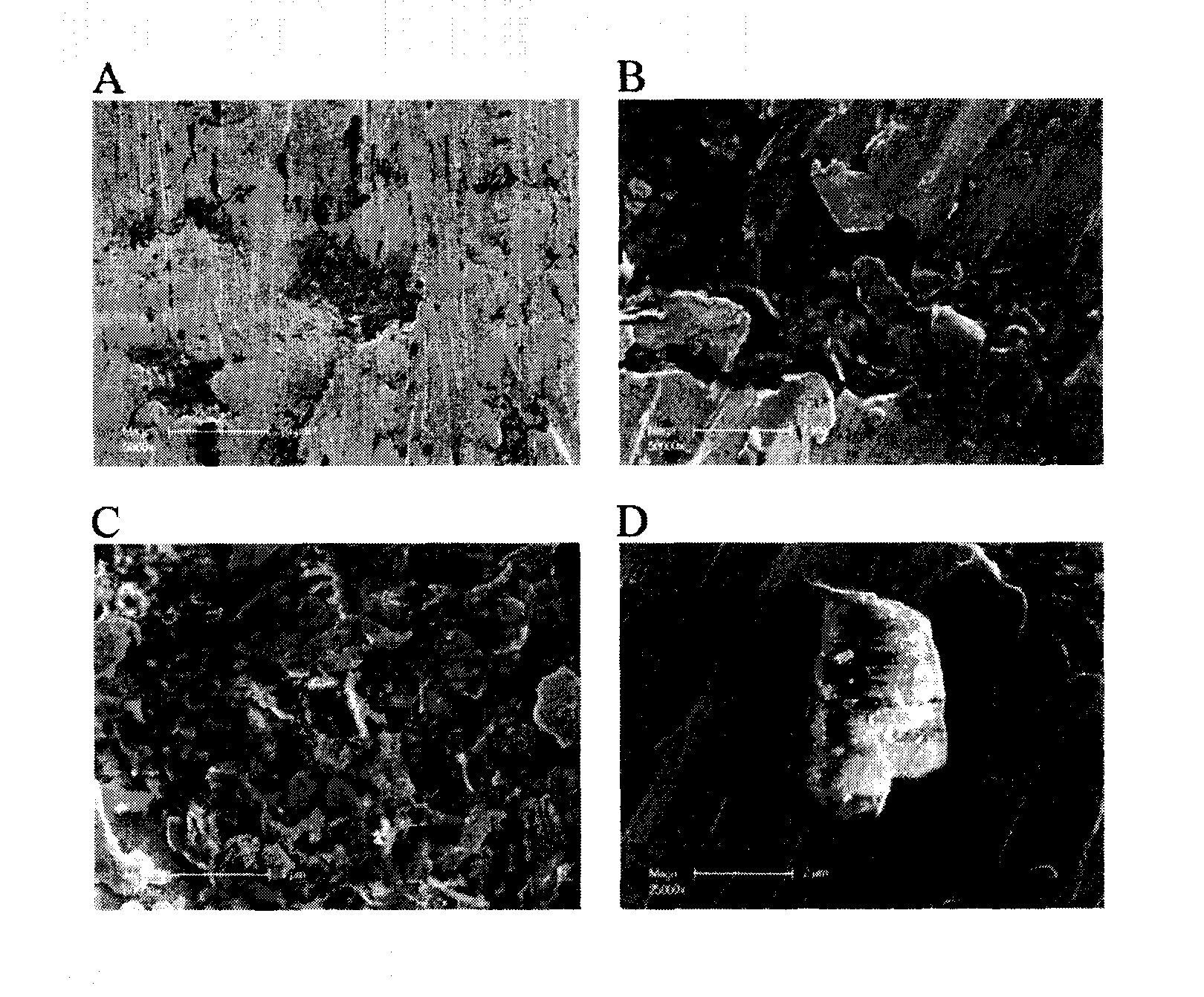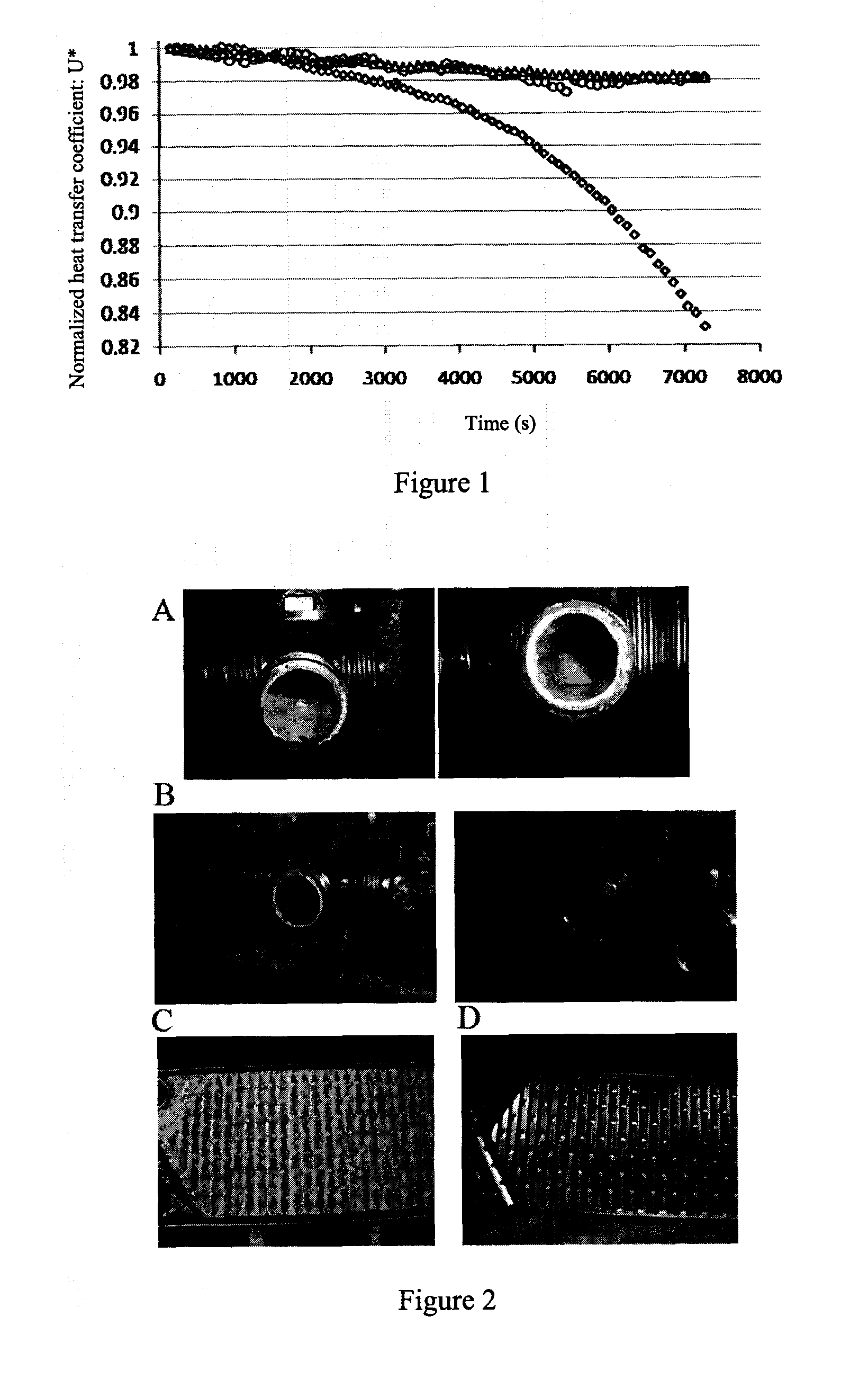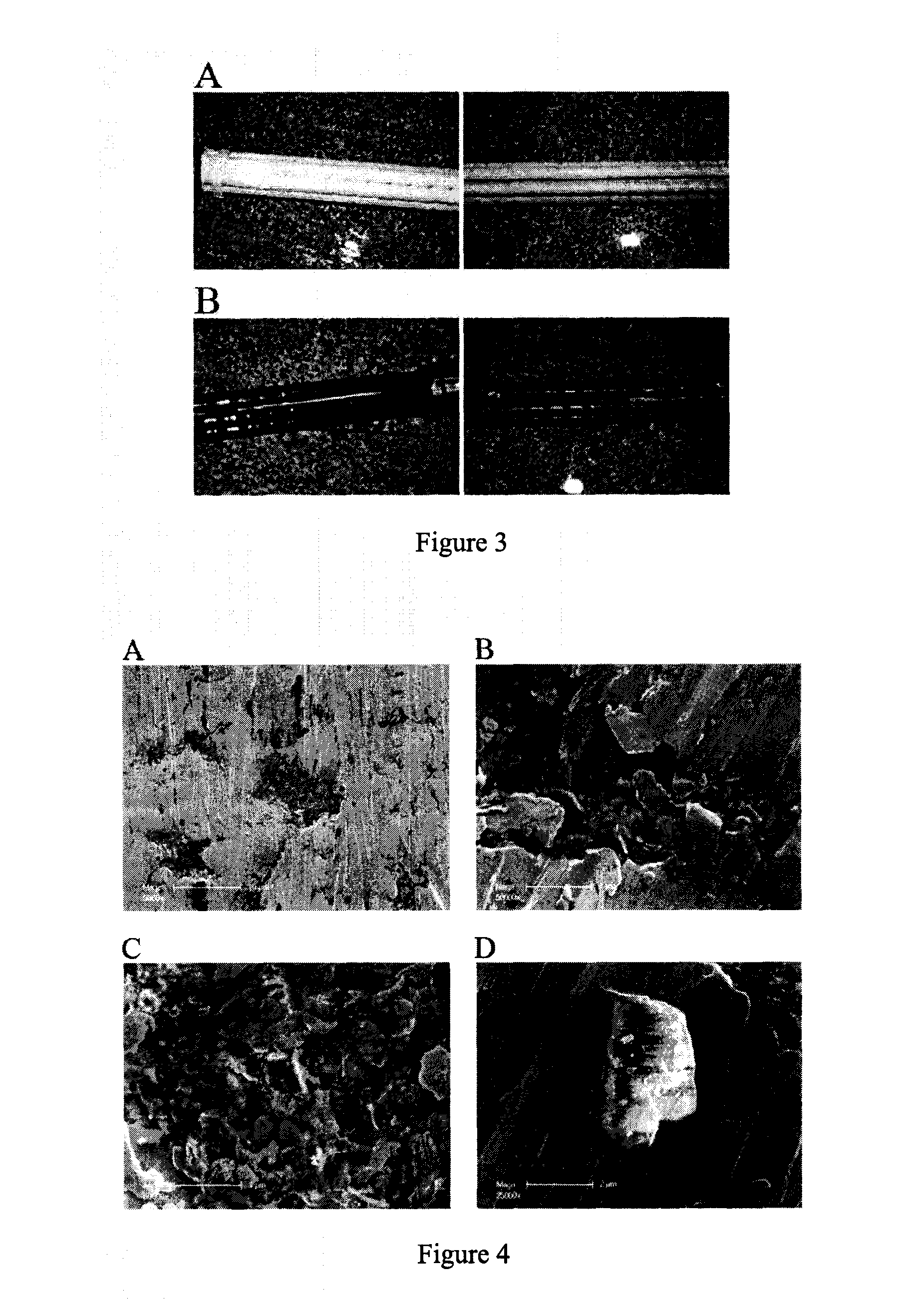Materials and Methods
a technology of antifouling coatings and materials, applied in the direction of antifouling/underwater paints, pipes, protein coatings, etc., can solve the problems of affecting the performance of antifouling coatings
- Summary
- Abstract
- Description
- Claims
- Application Information
AI Technical Summary
Benefits of technology
Problems solved by technology
Method used
Image
Examples
example 1
Analysis of Milk Fouling Using a Plate Heat Exchanger as Substrate and Cooling Water Fouling Using a UHT Heat Exchanger as Substrate
[0056]Materials and Methods
[0057]Coating of Substrates
[0058]Polysaccharide (in this case, 35% dextrin starch was mixed with 65% OSA starch and the final concentration of the mixture in water was 8.5% (w / w) with the pH around 3.5) was dissolved in water at 55° C. and heated up to 85° C. Solution was pumped into the heat exchanger and circulated for 4 hours and temperature was kept at 95° C. with the flow rate of 17 L / min for the plate heat exchanger and 35-40 L / min for the UHT heat exchanger. The polysaccharide solution was drained after 4 hours. Protein solution (80% casein (containing calcium) was mixed with 20% whey proteins with the final concentration of 12% (w / w) in water, pH at 6.7) was dissolved below 50° C. and pumped into the heat exchanger with the same flow rate of the polysaccharide solution. Protein solution was circulated for 2 hours at 85...
example 2
Analysis of Milk Fouling Using a Dairy Processing Production Line as Substrate
[0103]Materials and Methods
[0104]Coating of Substrates
[0105]Polysaccharide (in this case, 35% dextrin starch was mixed with 65% OSA starch and the final concentration of the mixture in water was 9% (w / w) with the pH around 3.5) was dissolved in water at 85° C. Solution was pumped into the heat exchanger and circulated for 5 hours and temperature was kept at 95° C. with the flow rate of 10 L / min for the Amotec-THE heat exchanger and 80 r / min stirring speed for the pot heat exchanger. The polysaccharide solution was drained after 5 hours. Protein solution (80% casein (containing calcium) was mixed with 20% whey proteins with the final concentration of 12% (w / w) in water, pH at 6.7) was dissolved below 50° C. and pumped into the heat exchanger with the same flow rate and stirring speed of the polysaccharide solution. Protein solution was circulated for 1 hour at 90° C. The protein solution was then drained an...
PUM
| Property | Measurement | Unit |
|---|---|---|
| Temperature | aaaaa | aaaaa |
| Temperature | aaaaa | aaaaa |
| Temperature | aaaaa | aaaaa |
Abstract
Description
Claims
Application Information
 Login to View More
Login to View More - R&D
- Intellectual Property
- Life Sciences
- Materials
- Tech Scout
- Unparalleled Data Quality
- Higher Quality Content
- 60% Fewer Hallucinations
Browse by: Latest US Patents, China's latest patents, Technical Efficacy Thesaurus, Application Domain, Technology Topic, Popular Technical Reports.
© 2025 PatSnap. All rights reserved.Legal|Privacy policy|Modern Slavery Act Transparency Statement|Sitemap|About US| Contact US: help@patsnap.com



